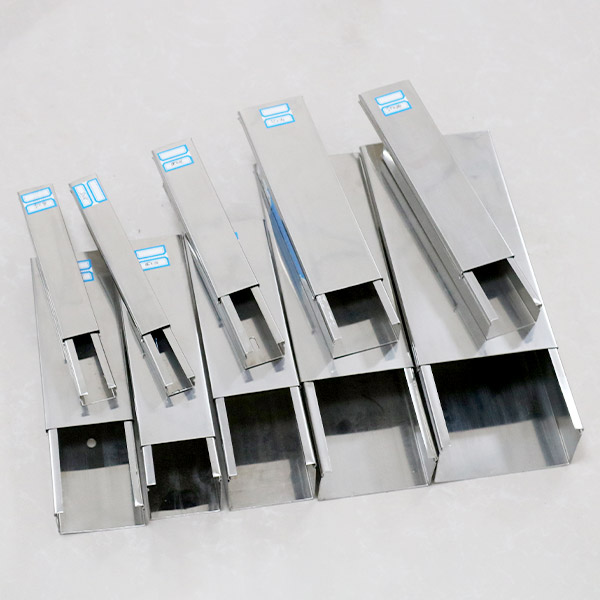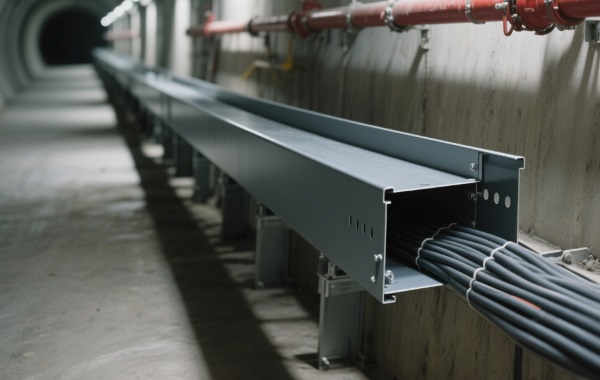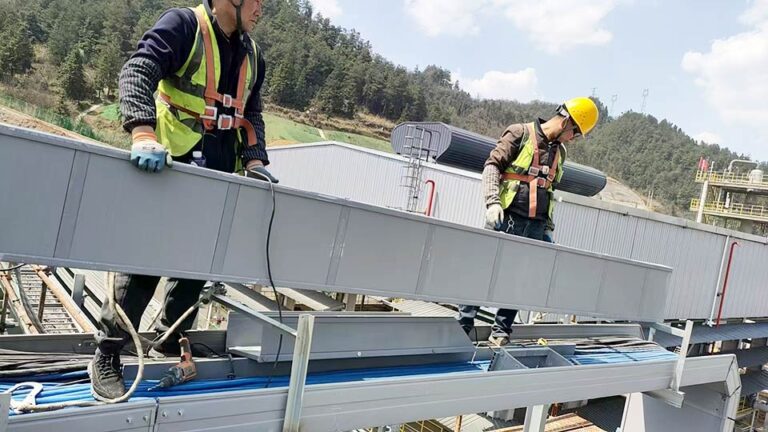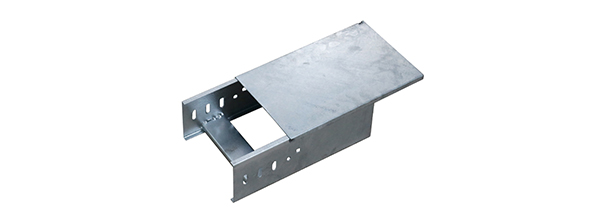
In today’s rapidly evolving industrial landscape, efficient electrical infrastructure is critical to ensure safe and reliable operations. Among the various components used to support modern power and control systems, the industrial cable tray stands out as an indispensable part of electrical installations. It provides structural support for insulated cables, ensuring safety, organization, and ease of maintenance across facilities such as manufacturing plants, data centers, oil refineries, and renewable energy sites.
An industrial cable tray system acts as the backbone of a facility’s cable management network. It is designed not only to support the physical weight of power and control cables but also to provide ventilation, scalability, and simplified maintenance compared to traditional conduit systems. According to the MarketsandMarkets 2024 Industry Report, the global cable tray market is projected to exceed USD 10.5 billion by 2030, driven by industrial automation, renewable energy expansion, and infrastructure modernization.
Table of Contents
Understanding the Purpose of Industrial Cable Trays
Industrial cable trays serve a fundamental purpose: to route and protect electrical and communication cables while ensuring system efficiency and safety. They are particularly advantageous in large-scale installations that require flexible layouts and frequent cable modifications.
The primary goals of cable tray systems include:
- Supporting heavy power and control cables across long spans
- Preventing damage from environmental factors such as moisture or chemicals
- Allowing for natural air circulation to avoid cable overheating
- Reducing downtime through easier inspection and maintenance
- Providing scalability for future system upgrades
Unlike rigid conduits, which are time-consuming to modify, industrial cable trays provide an open structure that simplifies cable routing and troubleshooting.
Benefits of Using Industrial Cable Trays
Choosing the right industrial cable tray brings multiple operational and financial benefits.
- Enhanced organization: Cable trays provide structured routing paths, minimizing tangling and interference between power and signal cables.
- Heat management: Open designs, such as ladder or perforated trays, promote air circulation, preventing excessive heat buildup that could degrade insulation.
- Reduced downtime: Maintenance teams can easily access, inspect, and replace cables without dismantling the entire system.
- Lower installation cost: Compared to conduit systems, tray installation is quicker and requires fewer materials and fittings.
- Load capacity and strength: Industrial-grade trays can support heavy loads and long spans, reducing the need for additional supports.
- Durability: Materials like galvanized steel and stainless steel provide high resistance to corrosion and physical impact.
- Safety compliance: Trays can be designed to meet standards such as IEC 61537 and NEMA VE 1, ensuring electrical safety and performance reliability.
Common Types of Industrial Cable Trays
Industrial cable trays come in several designs, each serving specific environments and cable types.
| Type | Description | Material Options | Typical Applications |
|---|---|---|---|
| Ladder Cable Tray | Two side rails connected by rungs, allowing excellent airflow and strength | Galvanized steel, stainless steel, FRP | Heavy-duty industrial cables, manufacturing plants, energy projects |
| Perforated Cable Tray | Bottom with slots or holes for ventilation and medium cable loads | Aluminum, steel | Power distribution in factories, offices, and commercial spaces |
| Solid Bottom Cable Tray | Fully enclosed tray that protects cables from dust, debris, and liquids | Stainless steel, FRP | Data centers, clean rooms, chemical plants |
| Trough Cable Tray | Combines solid bottom with partial perforations for moderate airflow | FRP, steel | Process industries, manufacturing facilities |
| Channel Cable Tray | Compact single-channel tray for small bundles or control wiring | Polymer, aluminum | Light industrial use, automation control panels |
Each tray type can be further customized with accessories like cable tray clamps, connectors, bends, reducers, and covers, allowing for complete flexibility in installation.

Material Selection for Industrial Cable Trays
The performance and lifespan of an industrial cable tray depend heavily on the material.
| Material | Key Features | Advantages | Typical Usage |
|---|---|---|---|
| Galvanized Steel | Coated with zinc for corrosion resistance | High strength, cost-effective, suitable for most environments | Indoor and outdoor plants |
| Stainless Steel | Resistant to chemicals and high temperatures | Excellent corrosion resistance, long service life | Food, pharmaceutical, and chemical industries |
| Aluminum | Lightweight yet strong | Easy to install, corrosion-resistant | Marine and offshore facilities |
| FRP (Fiberglass Reinforced Plastic) | Non-conductive and corrosion-proof | Ideal for chemical plants and humid areas | Outdoor installations, wastewater treatment plants |
| Polymer Composites | Lightweight and UV-resistant | Eco-friendly and easy to handle | Renewable energy and outdoor applications |
Key Industrial Applications
Manufacturing and Automation
In large production facilities, thousands of cables are routed to power machines, robotics, and control systems. Ladder and perforated trays are ideal for these environments because they support high load capacities while allowing heat dissipation.
Oil, Gas, and Chemical Plants
These facilities demand corrosion-resistant materials. Stainless steel and FRP cable trays prevent chemical damage, ensuring long service life even in harsh industrial conditions.
Data Centers and IT Infrastructure
Solid-bottom and perforated trays provide structured paths for high-density data and control cables while maintaining EMI shielding and airflow.
Renewable Energy Facilities
Solar farms, wind power stations, and hydropower plants require durable, lightweight trays to handle long cable runs in outdoor environments. Galvanized and FRP trays are commonly used.
Transport and Infrastructure Projects
Railways, airports, tunnels, and highways rely on robust trays to route signaling, lighting, and power cables safely across long distances.
Design and Installation Considerations
When designing a cable tray system, engineers should assess:
- Load requirements: Static and dynamic loads must be within the tray’s rated capacity
- Support spacing: Ladder trays can span 3–6 meters, while perforated trays require closer support
- Ventilation needs: For power cables, adequate air circulation prevents overheating
- Corrosion resistance: Match materials to environmental exposure (e.g., FRP for corrosive zones)
- Accessibility: Maintenance access should be planned for inspections and repairs
- Grounding and bonding: Metallic trays must be properly grounded to prevent shock hazards
Technical Specifications
| Parameter | Standard Range | Description |
|---|---|---|
| Tray Width | 50mm – 900mm | Determines cable volume and routing capacity |
| Tray Height | 25mm – 200mm | Defines load support and mechanical strength |
| Thickness | 1.2mm – 3.5mm | Varies by material and design |
| Support Span | 1.5m – 6m | Dependent on tray type and load |
| Finish | Galvanized, Powder Coated, Polished | Enhances durability and corrosion resistance |
Properly sizing the tray system based on cable load calculations and support spacing ensures long-term reliability and compliance with industrial safety standards.

Maintenance and Inspection
Routine maintenance enhances system reliability and extends service life. Key steps include:
- Removing accumulated dust or debris from trays
- Inspecting for corrosion, cracks, or loose fittings
- Checking the integrity of grounding connections
- Ensuring that clamps, hold-downs, and joints are secure
Preventive maintenance, typically performed twice a year, minimizes unexpected downtime and enhances overall electrical safety.
Why Choose Yidian Industrial Cable Trays
Yidian is a leading cable tray manufacturer and supplier, specializing in high-performance industrial solutions. Our cable trays are designed to withstand demanding industrial conditions with superior corrosion resistance, load-bearing capacity, and long-term reliability.
We offer:
- Full range of materials: galvanized, stainless steel, FRP, and polymer trays
- Custom manufacturing according to project requirements
- Accessories like bends, reducers, and hold-down clamps
- ISO and IEC-certified production for global quality standards
- Expert technical support and fast global delivery
With decades of expertise, Yidian’s products have been trusted in power plants, refineries, factories, and renewable energy facilities worldwide.
Conclusion
An industrial cable tray system is more than just a cable support—it’s a critical infrastructure component that ensures safety, organization, and efficiency across complex electrical networks. Whether used in heavy manufacturing, data centers, or renewable energy installations, the right tray material and design can drastically improve performance, reduce downtime, and lower maintenance costs.
By choosing Yidian, you’re partnering with a professional cable tray manufacturer committed to quality, safety, and innovation. Our products are engineered to perform in the world’s toughest industrial environments—delivering reliability you can trust.
FAQ
What makes industrial cable trays better than conduits?
Cable trays allow easier installation, scalability, and ventilation, making them more cost-effective for large-scale projects.
Can industrial cable trays handle heavy cables?
Yes, ladder-type and reinforced steel trays are designed for heavy-duty power cables with high load capacities.
Are industrial cable trays suitable for outdoor use?
Yes, galvanized, stainless steel, and FRP trays are weather-resistant and ideal for outdoor applications.
Do cable trays comply with international safety standards?
High-quality trays comply with IEC 61537 and NEMA VE 1 standards for structural strength, electrical continuity, and corrosion protection.
How long do industrial cable trays last?
Depending on material and environment, trays can last 20–30 years with minimal maintenance.
Can I customize cable tray sizes?
Yes, Yidian offers custom dimensions, finishes, and accessories to meet specific project needs.



